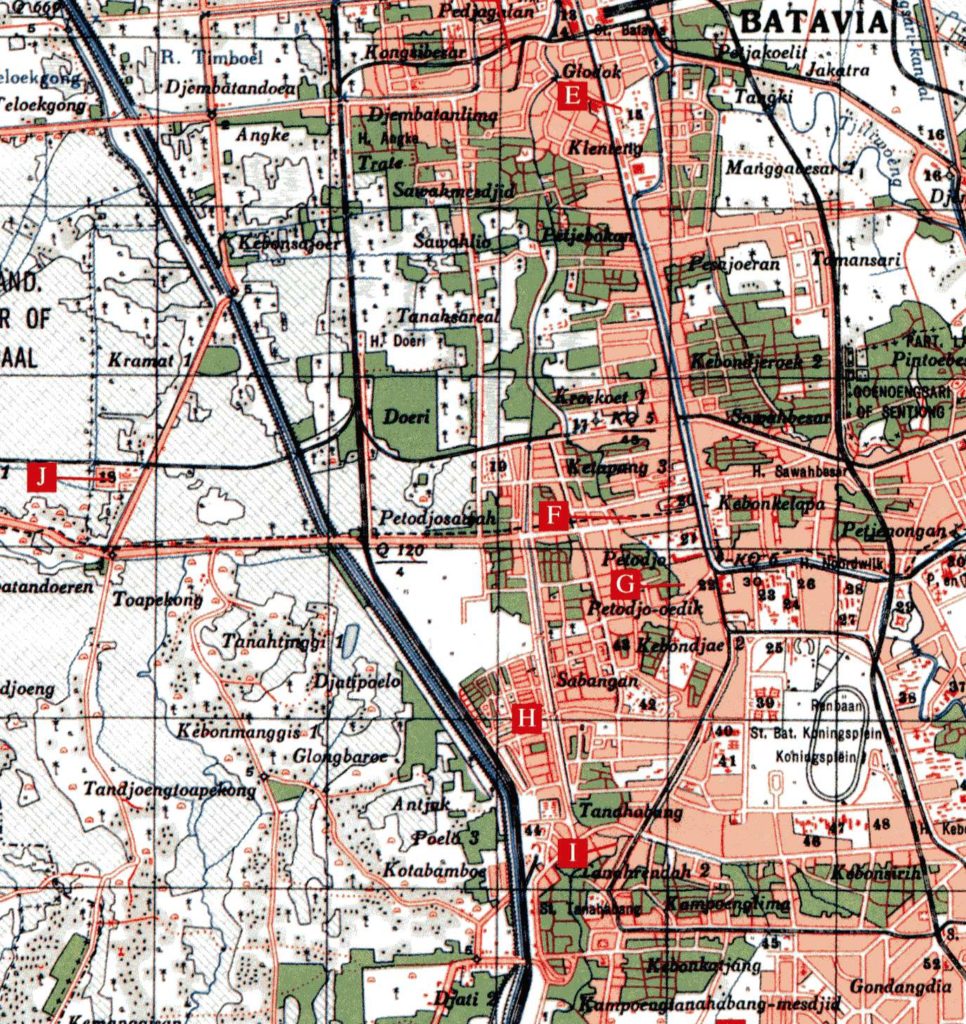Grogol

Grogol
Grogol prison camp , a former insane asylum, was located three kilometers west of Batavia (todays Jakarta), close to the railway line heading westward to Tangerang. At the time Grogol lay surrounded by rice paddies. Today Grogol is part of the Greater Jakarta metropolitan area.
Grogol served as a prison camp for two years, initially as of 1 July 1943 as women and children’s camp, then, after 29 August 1944 as a men’s camp, and finally, after 28 november1944 once again as a women’s and children’s camp until 18 April 1945. The fate of the original inhabitants, mentally disturbed patients who were evicted in 1943 is unrecorded. This internment camp formed part of Bunsho I, the Japanese administrative unit also covering the other camps of Batavia, and as such came under the control of Captain Sonei Kenichi, after the war convicted as a class B war criminal.
The site was attractive to the Japanese Military as an internment camp because of its isolated situation , reducing the risk of contact between internees and Indonesians while at the same time being within walking distance through the rice paddies from a railway line thus facilitating the movement of prisoners in and out of the camp. Its capacity was limited to about 1000.
Campioni camp Leader
Grogol gained fame during its initial phase when it housed eight hundred destitute women and children under the leadership of Elly Campioni Soeters, whose memoir has been published in Holland (2022).
her time in that camp lasted between 4 July 1943 and 29 August 1944 when all prisoners returned to Tjideng. About a third of her two-hundred page memoir covers this period. To the best of my knowledge hers is the only published account of the trials and tribulations borne by women who undertook a leadership role under the Japanese occupation.
Leave a Reply